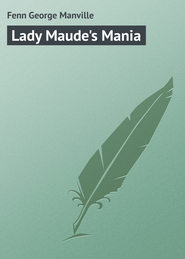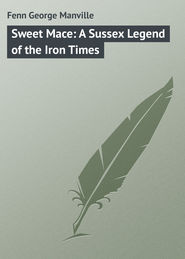По всем вопросам обращайтесь на: info@litportal.ru
(©) 2003-2025.
✖
The Khedive's Country
Настройки чтения
Размер шрифта
Высота строк
Поля
The cauliflower flourishes fairly well under similar cultivation to the cabbage, but being more delicate requires greater attention; differing from the latter, the heads are well formed, but it is necessary to shade them when coming to perfection, the clean, white growth being liable to be damaged by the too ardent sun.
Good cauliflowers command a ready sale at better prices than are to be had in London as a rule, the average cost being from twopence-halfpenny to fivepence per head.
Another very familiar crop is seen largely in Egypt – the leek. This is a profitable vegetable, which grows to a good size, is easily cultivated, and realises a total per acre of about fifteen pounds. The carrot, too, is largely grown – in two varieties, the native and the Greek. The native kind is sown in September, and is ready for lifting in January; while the Greek variety, sown in the same month, is also used for the production of a summer crop in February. A deep soil is necessary, while its sandy nature in Egypt is most suitable for this root, and when carefully cultivated a fair return may be expected.
One of the most extensively grown vegetables, a very general favourite almost everywhere except in England, is the garlic. It does well in Egypt, often in plots of as much as two acres, and has the advantages of not requiring great care in cultivation, nor much water; while an average crop will yield of the silvery bulbs enough to be valued at about fifteen pounds per acre.
The onion, again, proves itself to be a most thriving inhabitant of this Eastern country, growing hard, firm, clean-skinned, and healthy. In this sunny clime it is extensively grown, and not merely for home use. The kind most popular is the red Spanish onion, and it is cultivated both in Upper Egypt and Lower, there being this peculiarity of difference, namely, that the Spanish onion grows to a larger size in the south, while the flavour of those grown in the Delta is superior.
A few words will not be out of place respecting the cultivation of this vegetable in Upper Egypt, where it is grown most extensively as a farm crop for export. The seed is sown in the month of October, transplantation takes place in March, and, all going well, the crop is ready for lifting in June or July. After the transplanting no irrigation is required. The yield is approximately four to five tons per acre, and the market price two pounds per ton.
The next vegetable on our list when grown in quantity looks wonderfully familiar and home-like. It is the artichoke – not that of tuberous and sunflower-like growth, but the deeply cut, acanthus-like leaved ornamental plant of English gardens, with its majestic thistle-like purple head.
This is one of the best-paying garden crops, these heads being greatly in demand by Europeans, though not much sought after by the natives. In the culture it will be found that the growth is excellent for four years, when transplanting becomes necessary and should be resorted to.
Asparagus is decidedly one of the best-paying crops in Egypt, and naturally always in great demand by the Europeans who visit or pass through the country in ever-increasing numbers. The cultivation is the same good old-fashioned style practised in England, the beds being well prepared and generously treated with stimulants. All that is required to secure a fine crop is proper attention under skilled direction, for there are no drawbacks from frost, the grower never finding the sturdy greenish purple shoots of yesterday drooping over and destroyed by the morning’s frost.
Well treated, the beds will remain good for from ten to fifteen years, a very modest computation this, for if well-managed and not cut too hard, a good asparagus plantation ought to remain prosperous for twenty or thirty years. As the result of his generous treatment in the way of stimulants, the grower may expect to receive wholesale from two shillings to five shillings per hundred shoots, according to their size.
That easily-cultivated wholesome vegetable, spinach, is largely grown from September till January; while now may be added, most extensively raised, a vegetable new to Occidental eyes, in company with three more which have long periods of growth, well fitting one to succeed the other.
The first is a small-flowered mallow, whose period is from September to October – it is much relished by the poorer Egyptians as a cooked vegetable resembling spinach; purslane is another very easily-grown plant, whose period is from March to September; Jews’ mallow, too, is a vegetable greatly esteemed by the natives. This is cultivated, and also found growing wild in the fields. It is much in demand as a summer vegetable. Okra is another dish held in high estimation; it is not difficult to grow, and forms a good paying crop.
To return to the familiar vegetables of Western gardens, we have a great favourite in the shape of the haricot bean. This grows exceedingly well in Egypt, on condition of its being well supplied with water, while the rapidity of its maturing is marvellous, showing, as it does, the beauty of the Egyptian climate and the power of the sun, for it is fit to pick thirty days after sowing, and the land ready for another crop, a fact which seems almost incredible.
The next on the list of profitable vegetables is the ordinary broad bean, but this is not extensively grown, as it is only consumed by the upper class natives, the poorer people preferring the ordinary horse bean, which is grown as a winter crop. These beans are a very common article of food, and are bought by the peasantry, ready boiled, in most public places. They are also largely employed as provender for the working cattle. The roots of an arum and of the lotus, too, are largely consumed, and no wonder in the case of the latter in such a dreamy land; but the effects are not quite the same as the former Laureate described.
The turnip, so popular in England, finds little favour, though it is easily raised as a medium-paying crop, and, odd as it may sound, it is principally used pickled.
Colocass is generally grown upon the farm. The tubers are large, about the size of an English turnip. This is a splendid paying crop, which is largely consumed as a vegetable and forms one of the staple foods of the fellaheen.
The sweet potato is also a common vegetable here, but the name sounds foreign to an English cultivator. It is a plant with tuberous roots of a white colour, mostly eaten roasted, and, like the colocass, it is a favourite food of the farm labourer. The value of the produce of an acre may be estimated at ten pounds, and the duration of the crop is about four months.
The cucumber thrives very well in Egypt, and, of course, there is no necessity for the protection of glass. It is as popular as in England, but perhaps more utilised, lasting well through summer into autumn, and proves to be a very paying crop, provided it has a plentiful supply of water. This may also be said of the two varieties of vegetable marrow, the green and white, which are largely raised. The fruits are most popular when very young, and are much relished when treated as the cucumber is in England – that is to say, served as a salad, though it is cooked as well. This, like the cucumber, is a medium-paying crop. As for the latter, it has been a favourite object of culture, dating right back to the days of the Israelites. The allusion to the cucumber will be recalled, and all species of this family are cultivated with assiduity. Not that there is anything wonderful in this, for in a hot country fruits and vegetables of rapid growth, and which cause little trouble, are sure to be affected. We say rapid growth advisedly, for in favourable seasons the shoot of a cucumber may be almost seen to grow, achieving as it does, at times, a length of twenty-four inches in a day and night.
The ordinary salads and herbs of the English garden are easily raised, and form profitable crops, available summer and winter, and are highly esteemed. Among other plants we have poppies, madder, indigo, flax and hemp; while in the province of Fayoum one very charming form of gardening is practised, namely the growth of the rose tree, from which is prepared the rose water so popular all through the East.
As for flowers of all descriptions, where they are scarce it is the fault of the people, for many of our most brilliant kinds, especially the more tender, which are raised in our islands only with care, brighten the land and flourish everywhere like weeds.
Our ornamental hothouse growth, the eggplant, here forms a most important vegetable, which is extensively cultivated. It is similar to the aubergine, which is used in France and seen occasionally in Covent Garden Market; but the years glide by, and its bids for popular favour have met with but little success.
It is the reverse in Egypt, where its use is general, whether as a cooked vegetable, pickled, or in its raw state. It demands a rich, deep soil, and is raised in both varieties, white and black, for use in summer and autumn, and proves to be very profitable to the grower.
Chapter Fourteen
Perhaps the most successful vegetable that has been introduced into England is the tomato. Forty or fifty years ago a punnet or two of the attractive vivid scarlet fruit might be seen in season at Covent Garden Market. They were known as “love-apples,” and probably were bought and consumed; but their growth into favour was very slow before becoming a fashion, and, with most people, an acquired taste. The tomato forms a summer production of the English market gardener, who is rivalled by the growers of the Channel Islands; and it is sent into market daily by the ton; while, when the inclemency of our climate renders firing absolutely necessary, the enterprising growers of the Canaries keep up the supply. Flourishing so well just off the west coast of Africa, it is only natural that the tomato should find a congenial home in the fertile East of the great Continent, and it is extensively grown with increasing success in Egypt.
As an example of the tomato being treated as a profitable crop, here is an instance of what has been done in the way of market gardening in the district of Alexandria, and may be done again by those persevering cultivators who are struggling to make a moderate living.
A father and two grown-up sons may rent a plot of land of, say, four acres in extent, the rent of which perhaps reaches ten pounds per annum, the gardener having to raise water for irrigation purposes.
The occupation of the land would commence on the first of August. The soil may be classed as pure sand, which naturally requires a liberal application of farmyard manure. The ordinary tillage having been carried out, the cultivator begins by transplanting seedling tomatoes about the beginning of September. Not being prepared to plant the whole of his four acres with tomatoes, he sows on another part vegetable marrows, which in this hot climate are ready for plucking in six weeks, the plants continuing to bear for a month; while directly this supply is finished another crop of marrows may be sown on the same land.
Meanwhile, the tomatoes are pushing forward to be ready by the first of January at a time when the price is generally good, though probably in no other vegetable is there so great a variance in the amount it will fetch, dependent, of course, on the scarcity or plentifulness of the crop.
It will be news, probably, for the British grower when he reads that the wholesale price of tomatoes in Egypt varies from one farthing to fivepence per pound. Perhaps he may open his eyes a little wider when he reads that a fair estimate of the gross return from growing tomatoes for the market supply of Alexandria will vary from ten pounds to fifty pounds or more per acre; and, of course, this is in the open ground, forming an almost immediate return, and with no preliminary outlay for glass houses.
But there are always drawbacks in gardening; and one of these, which may occasionally mar success, is caused on this land so near the sea by the fogs. These, if they attack this delicate plant, so famous here at home for developing aphides and fungoid diseases, like their unfortunate relatives the potatoes, destroy the leaves, blacken them, hinder the setting of the blossom, and generally reduce the crop.
Several men have been known to engage in this cultivation in the neighbourhood of Alexandria during the last five years, and apparently they have financially improved their position.
Leaving the aristocratic tomato and turning to its poor relative the potato, it might have been hoped that in such a hot, sandy land as Egypt, where thousands of acres offer the same facilities, and are made as rich and fertile as the famous warp-land potato tracts of north Lincolnshire and south Yorkshire, a home would have been found where it would flourish free from disease.
Unfortunately, the information to be given to the horticultural or agricultural grower upon this point is not good; in fact, quite sufficient to make the writer suggest that it should be a crop to be left alone.
Certainly potato growing is tempting; the cultivation is simple, the crops heavy and very profitable if– this is a very large “if,” and means so much, especially connected with weather and disease. Experience of long years employed in gardening and farming in Egypt suggests that if the cultivation of the potato is entered upon it is best to be grown on the farm or by large market gardeners.
Good quality potatoes, such as are marketed in England, are rarely found in Egypt. The crop is generally grown from “seed” imported from France and Italy, and a sandy soil is chosen. Two crops, however, can be taken from the land per annum. The first is planted in October, and should be ready for lifting in the beginning of February, a period of five months; the second, planted in February, is ready for harvesting in June – the duration of time for the crop to be on the land, one hundred and ten days. It sounds novel to a British grower to speak of a winter and a summer crop of potatoes, two crops in the year; but this is so, and the winter may yield three tons per acre, while the summer produces five to six; while the current price per ton returned to the grower is about seven pounds. As this is the most popular of vegetables, and the demand always so great for good, well-grown new potatoes, experiments have been tried for raising these in the neighbourhood of Cairo and sending them packed in boxes to arrive in England, when they would be eagerly bought up in the market as luxuries, at the beginning of March.
Here are the returns of the experiment. From fifteen to eighteen pounds per ton were realised; carriage, freight, and other expenses amounted to three pounds per ton, leaving a margin of profit over the price in Egypt of from five pounds to eight pounds sterling. Enough this to make the Delta worthy the name of a land of promise, and especially more so when it can be, and is, announced that it is a country where there is no potato disease. In exceptional cases, however, there is the drawback of cold weather, which retards the growth of the winter crop.
Another objection is that all the seed potatoes – and these are heavy of freight – have to be imported, as storing throughout the summer is impracticable.
It is only fair to say, however, on behalf of our good old mealy friend, the familiar object of every man’s table, that in his guise of a foreigner – an African – he will be much better if he is let alone and not subjected to the tricks of trade, which recoil upon and tend to spoil his character. For in the harvesting of the crop a bad practice has arisen with the Egyptian market gardener, who generally carries on his operations in the neighbourhood of some irrigation canal connected with the Nile, where he has, so to speak, abundance of conserved water always on tap ready to give his fields a heavy watering. This he bestows upon his potatoes just before turning them out of the ground, as he finds that it greatly increases the weight of the tubers; but it spoils their quality, and makes them what a Londoner calls “waxy,” and a north countryman “sad.”
One ought not to close one’s list of garden or farm productions without adding the names of a few so-called spices, or flavour-producing plants, which are always in steady demand and flourish well in the valley of the Nile. Among these are the capsicum, the green and the red, which are most easy of culture, and come to maturity rapidly with the same treatment as is accorded to the tomato. There is also the lesser kind, or chilli; the caraway famous for its seeds, the coriander, and dill; while as to the familiar mustard, it hardly asks for cultivation at all, but grows rapidly and ripens well, while the seed, when ground into the familiar condiment, is pungent and aromatic in the extreme.
As is well-known, a fine class of tobacco is grown pretty largely in the Delta. It is wanting in the strength of the kinds raised in the West Indies and the United States. It is excelled, too, in potency by the products of the East Indies; but it is of a very delicate flavour and much liked, though not so popular as that of Turkey in Europe and Asia. But this is partially due to want of usage on the part of smokers, who are not accustomed to the pungency and fine aroma which appertain to the Egyptian tobacco as compared with the Turkish. But the North African is remarkably good all the same, and flourishes splendidly, there always being abundance of sunshine at the picking time and excellent opportunity for haying the crop. For, after all said and done, a great deal of the aroma of tobacco depends upon the fermenting process it goes through in being dried and pressed, just as a well-made crop of grass, hay, or clover, is dependent upon the skill of the farmer and his choice of weather.
Chapter Fifteen
Supposing an enterprising personage to have taken up a tract of the desert of, say, one hundred acres in Egypt, where divisions must not be looked for in the way of fence or hedge, but dependence placed upon the irrigating drain, it will be as well to give a list of the farm implements he would require, and their cost – always presuming that he is prepared to be content, certainly at first, with the ordinary contrivances of the country, which are rough, but very cheap.
Necessaries are given here, and nothing more; while the accompanying illustrations spread through the text afford a very good idea of the objects that will become familiar upon his pioneer land.
Four native ploughs, exceedingly rough in construction, for tickling the soil that is to laugh with a harvest, their cost about ten shillings each; a baulk wood, to be drawn by oxen, mules, or donkeys, over the yielding surface and act the part of a roller, six shillings; a ridging box, for preparing the land for potatoes or sugar-cane, two shillings; two scrapers, eight shillings; chains, six shillings; one lorry, five pounds; two box carts at four pounds each; two threshing norags at eight pounds each; total, thirty-two pounds ten shillings.
Of course, it is open to the man of enterprise to invest in the different ingenious contrivances of the British agricultural implement maker, such as the admirable invention the Patent Turn-Wrest Plough, invented by Mr Thomas Wright, whose experience in the cultivation of the Khedive’s land resulted in his bringing to perfection an implement exactly suited to Egyptian needs.
The list given above names all that is absolutely necessary in a country where the tiller of the soil is so munificently aided by the almost incessant sunshine and abundant water.
But the farm implement par excellence of the fellaheen, the tool which is to him what the shovel is to the British navvy, an instrument with which nearly everything in the way of moving the soil can be done, is the fas, the broad-headed hoe seen carried by the two fellaheen labourers in the engraving accompanying this chapter. It is one of the first inventions of the cultivator, and not so very far removed from its pierced flint representative occasionally turned up amongst the weapons and tools of primitive man; but when bronze, and later on iron, began to yield to the inventor, and the action of fire was utilised by the Tubal Cains of their day, the broad-headed hoe began to develop; and we have it spread, in a very similar form to that still used in Egypt, all round the world where men commenced to till the soil. For we see it to this day very similar in shape in those two vast agricultural countries, India and China, while in Egypt it is handled by the fellaheen labourer in a way which is beyond praise.
The native plough, as seen by the photographic reproduction, is a very primitive implement, the date of whose invention must be sought for by an examination of some of the characteristic gravings in marble to be found in the Egyptian tombs, where the pursuits of the old-time inhabitants are recorded in a style that is absolutely wondrous.
It consists of a pole of wood measuring about ten feet in length, which is strongly bolted to the sole or body of the plough. This soie, which measures three feet, is shod with a share resembling a pointed shovel. The end of the pole is attached by a rope to the yoke, which lies across the necks of the bullocks, buffaloes, or even camels – as seen in the case of the Norag, drawn round and round over the threshing-floor – which are utilised by the Egyptian cultivator according to his means, while the labourer guides the plough by the aid of an upright handle. This implement does not turn over the soil, and may be properly classed as a one-tined cultivator. There is a quaintness and old-world look, as shown in the photographs, in the mixture of forces, a huge buffalo bull being mated with a small native ox, a bullock with some fine-grown ass, while cows are frequently yoked together to help and drag the light plough. Whether horses of the type of our heavy, slow-going farm breed will finally work their way to the front remains to be seen; but at present they have hardly begun to oust the old-world yokes of strangely assorted beasts from the turning up of the soil. It is more probable, unless the fuel difficulty stands in the way, that the larger tracts will be further brought into cultivation by means of steam and the deep subsoil ploughs which do such an immensity of work in a single day.
As will be noted in the description, the modern native plough is single stilted, and it might be supposed in a country like this that such an implement had been in use ever since the plough’s invention; but as in many other records that have been unearthed, engraven in stone in the wonderful pictorial writings found in temple and tomb, we have proof that this was not always the case; for in the days of the agricultural King Ti, who is supposed to date back to the Fifth Dynasty, that is some five thousand years in the dim past, there is a representation of a plough in use with two handles, very much the same in shape as those brought out quite lately and known as the “American chilled,” these being guided in our own old familiar way.











